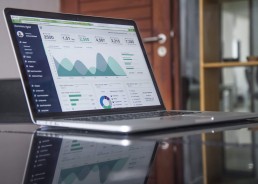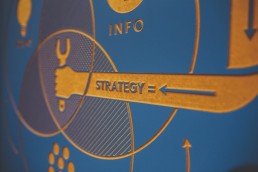Developers, designers and entrepreneurs alike—if you’re ever looking for a solid podcast to help you be more awesome at launching software products, Start Ups for the Rest of Us, featuring Mike Taber and Rob Walling is a perfect fit! The latest episode? SaaS Development Shortcuts – we liked it so much, we wrote a blog about it! Here’s how you can avoid a negative trickle-down-effect (AKA rework); stop doing work now that you could presumably hash out later, once your product and audience are more established. Stop worrying – and start reading through some important tasks (and short-cuts for them) that you can actually put on the back burner:
Marketing Automation

Most people think marketing automation can fix sales issues, but in the early stages, you don’t even know what the sales process looks like yet—it’s too early. Until you hit the point where you’ve refined product positioning, and know what content people need to understand your product, it’s a waste of time. Once you start receiving at least 500 unique visitors regularly, then you can start thinking about incorporating small email drip campaigns (surveys, reminder emails, etc.) and/or other marketing automation tactics.
Automated Billing Systems

Keep it simple – start off with PayPal or Venmo – avoid building out a billing system until you get to a point where it’s difficult for you to keep up. WP Simple Pay (a Word Press plug-in that captures credit card information) can also help with automation. Over time, add more things into your system to flesh it out further and build out only what you need—avoiding additional complexity initially, will make it easy on you in the long run.
Password Reset & Account Management

This comes down to time management. It’s a lot of time to implement vs. how many people will actually use it in the first few months of app development (think 20, 30, 40 customers). Do it manually at first, until you start to scale, and then build it out.
Reporting

Unless your app is specifically designed to provide reporting as a service, then you could probably get away with not having this early on. As you have conversations with customers, you’ll begin to learn more of what they want. It’s not helpful initially, because you will have built a bunch of things that people haven’t asked for, which will leave you with a bunch of rework, and additional, unnecessary code in your app later on.
Classic Marketing Strategies (SEO, Content Marketing)

These strategies do have a longer ramp-up time, so don’t wait too long to begin implementation. However, when you’re under the 50-customer mark, you’re not there yet. Ideally, you don’t want to drive this type of cold traffic to your site. These are things that you can build out later on, when you’re starting to scale team growth and marketing.
New Feature Development

Unless you get a certain number of people asking for a particular feature, or it’s a deal breaker if they don’t have it, it’s generally best to hold off initially (or until customers start asking for it regularly). Don’t spend your time creating something that people aren’t going to use or don’t use often— sometimes potential clients just ask questions because they want to know the answers to them, not because they actually want to use a particular component. Focus on creating and building out the features that are driving the value for your customers.
There you have it developers! Eat your heart out – and avoid rework – by doing the thing that most of us with that ‘developer mindset’ hate doing: waiting. Put these tasks and more, on hold, so you can refine and develop your product for your customers first.
As you develop your SaaS product’s strategy there are many other cost and time saving tactics that you can adopt. These shortcuts or strategies depend on what stage of the development process you are in. Click below to schedule a time to talk (It’s free) with us to find what would work best for you.

